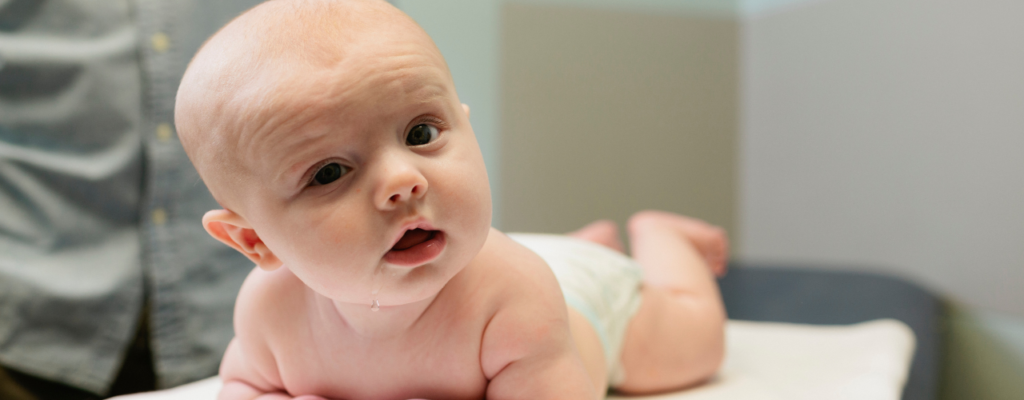Newborn skin is not the same as ours. Babies can get many different rashes that may be alarming to the parents and caregivers. Most of these are normal newborn skin conditions and do not require any specific treatment.
Jaundice
Frequently in the first several days of life your baby’s skin may be tinted yellow. We call this jaundice. This is not abnormal in most cases. It is caused by the accumulation of bilirubin in the skin. The bilirubin comes from the breakdown of the extra oxygen carrying red blood cells that your baby no longer needs now that he is breathing on his own and not getting oxygen from mom. Babies get rid of the bilirubin through their stool after it goes through the liver. Sometimes they just can’t excrete it all out fast enough and it builds up in the skin.
In some cases, the bilirubin level is high enough to require treatment with phototherapy. This may be done in the newborn nursery, at home, or if needed in a hospital room.
Acrocyanosis
At birth, your baby’s skin was purplish-red in color. The skin changes quickly to a pink color. In a great number of infants, the purplish discoloration of the hands, feet and lips is slower to turn to pink. We call this Acrocyanosis. It is more notable during crying, breath holding or if the baby is chilled.
Miliaria
Most babies have some red or white bumps on their face at some time during the first month of life. This is usually due to the immaturity of the sweat glands in the face and does not require specific treatment.
Cradle cap
This is a common problem in newborns and a source of frustration for many parents. It is basically dry scalp. It will resolve without treatment but there are things that you can try to help with the appearance of this unsightly problem. Daily shampooing and scrubbing of the area will work in mild cases. Thick plaques can be loosened with Vaseline and scrubbed off as well. If you are truly concerned about this, ask your doctor at the next wellness visit for more tips.
Diaper rashes
The term “diaper rash” refers to a variety of inflammations of the skin that occur on the lower abdomen genitalia, buttocks and upper portions of the thighs.
Friction rashes are the most common type of diaper rash. This is due to chafing. It comes and goes quickly on places where there is friction such as the abdomen where the diaper rubs and the inner thighs. It responds quickly to frequent diaper changes and avoiding diapers when possible.
Irritant rashes are usually confined to the curved surfaces of areas covered by the diapers. These rashes usually spare the creases. Irritant rashes can from chemicals (e.g. harsh soaps and commercial baby wipes), excessive heat, excessive moisture and the combination of urine and stool. Management is directed at keeping the area clean and dry and limiting irritation. Frequent diaper changes (especially at night) and thorough cleansing with a mild soap are protective. Using over the counter creams containing zinc oxide is protective from further irritation and allows for the healing of rashes. But remember to only apply diaper cream to dry skin.
If your baby’s diaper rash does not respond to the above measures, please call the office for further assistance.


